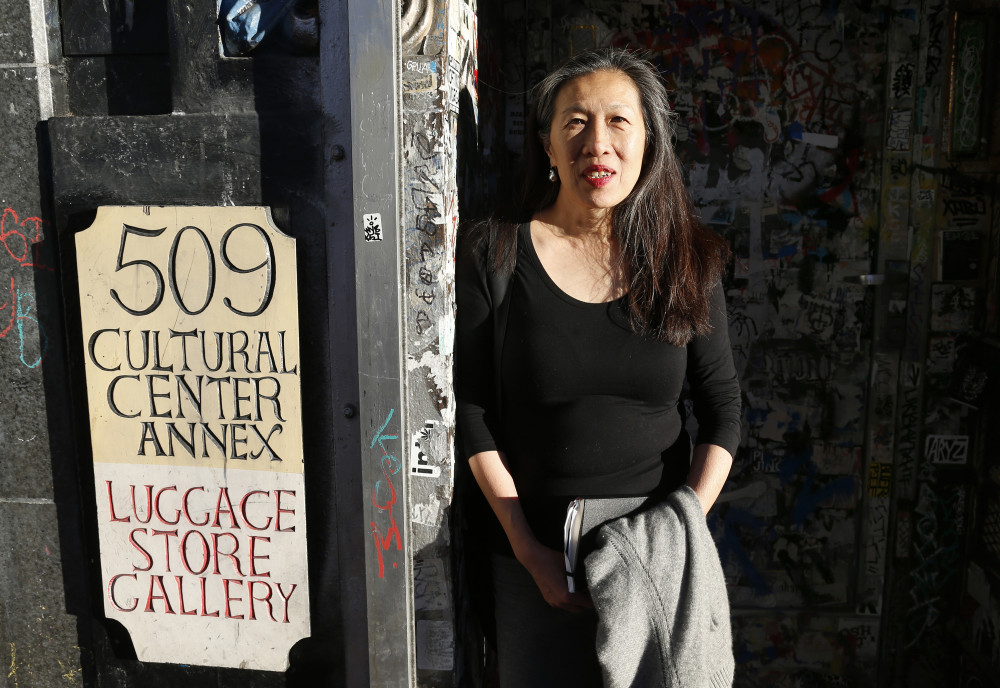By Richard Scheinin
San Jose Mercury News.
SAN FRANCISCO
With one-bedroom apartments renting for $4,000 a month, San Francisco is no longer a city that artists and arts groups can afford to call home.
In steps Moy Eng and CAST, the Community Arts Stabilization Trust. It’s a nonprofit that purchases properties for arts groups, then arranges affordable leases and buy-back plans for them. An offshoot of the Kenneth Rainin Foundation, which seeded CAST with $5 million three years ago, it is already having an impact on the city’s arts scene and stands as an innovative model for other communities.
A classically trained singer who has spent her professional life directing and funding arts groups on both coasts, Eng recently spoke to the San Jose Mercury News about CAST’s mission to keep San Francisco safe for artists. The interview has been edited for length and clarity.
Q: Will you describe CAST’s goals?
A: CAST got started because artists and arts organizations are being driven out of San Francisco because of the high demand and high prices for real estate. It’s a beautiful city, an amazing place to live, but there’s only so much real estate. And so we’re seeing this exodus of arts groups, and we’re starting to lose the cultural identity of the place.
We’re losing one of the very reasons that people want to move here in the first place, because of the city’s unique and incredible diversity of arts and culture.
With CAST, I hope we can start to mitigate some of the erosion. I don’t want to oversell it, but it’s a pretty cool solution.
Q: How does it work?
A: We’ve taken some innovative models and financial vehicles that are being used in other fields, affordable housing models, environmental land trusts, and we’re applying them in the arts and culture sector. We are in effect a nonprofit real estate and holding company for these groups. We acquire the space, we aim to match an arts organization with the right space. We then finance the property and lease it back to the arts organization at a below-market lease rate. Later, they get to buy it back at the same price for which we purchased it.
Q: Give me an example.
A: The CounterPulse dance organization is now housed in a space that we purchased on their behalf in 2015. We’ve taken it off the market and we will hold it for seven to 10 years while CounterPulse pays rent on a below-market lease. We’re buying them time to raise the money so that in 2022 they will be able to buy it back essentially at the 2015 price.
It was basically a distressed property, an 8,000 square-foot property at the gateway of the Tenderloin. It had been a club and before that a porn theater called the Dollhouse. We bought it and locked in the price, and they now have a state-of-the-art theater with a downstairs rehearsal studio and an apartment for visiting artists. The design is beautiful. It’s really beautiful. And best of all, they have their own permanent home. The new space is scheduled to open in the spring.
Q: Another example?
A: We’ve done essentially the same with the Luggage Store Gallery. They’ve been a contemporary art gallery for some time, and they re-opened with a number of special exhibits. It’s a 6,000 square-foot property, three stories.
Q: What’s next?
A: Since the initial $5 million investment three years ago, we’ve raised a total of $16.2 million, leveraging the $5 million by over 200 percent with philanthropic dollars and financing. And we are now working with Forest City development on the 5M Project, which you may have read about. It’s a four-acre mixed-use commercial and residential development, including affordable housing. It’s one large square block between Fifth, Mission and Howard streets, and we’re part of the arts and culture component.
If the proposal moves ahead, CAST will receive a historic, three-story, 12,000 square-foot building at the center of this project. It was formerly the San Francisco Chronicle’s photo studio, so the light is really beautiful. This building is envisioned to be an arts and culture center. Ultimately, it would be owned, managed and operated by CAST.
Q: You’ve devoted your life to the arts. This latest chapter must be gratifying for you.
A: To have this chance to work on a long-term, sophisticated solution to create permanent homes for artists and arts organizations in the most expensive real estate market in the world, to do just a little to help maintain the incredible and diverse arts culture that is San Francisco, is exciting and rewarding. And sometimes it’s very fatiguing! Working in a startup is not for wussies.
___
MOY ENG
Place of residence: Palo Alto, Calif.
Position: Executive director, Community Arts Stabilization Trust (CAST), San Francisco
Previous jobs: Executive director, Community School of Music and Arts, Mountain View, Calif., 2011-13; Program director, performing arts, William and Flora Hewlett Foundation, Menlo Park, Calif., 2001-2009; Program officer, human rights and renewable energy, Mertz-Gilmore Foundation, New York, 1996-2001
Education: Rutgers University, B.A. in theater arts; New York University, M.A. in arts administration
Family: Was married to the late bassoonist Dennis Godburn; two daughters, Amanda and Julia
___
5 Facts about Moy Eng
1. The granddaughter of immigrants, she “grew up in a Chinese laundry doing a lot of people’s dirty laundry in Trenton, N.J.”
2. She “can’t remember not being able to sing. All my life, I’ve been impacted by Motown, Gregorian Chant and Italian Baroque, and when I heard Sarah Vaughan’s voice as a 12 year-old, I wanted to be Sarah Vaughan.”
3. Trained as a classical singer, she used to have a four-octave range. “Now it’s like three and a quarter.”
4. She sings often in Bay Area coffee houses and clubs, and has composed nearly 30 songs with Wayne Wallace, the Grammy-nominated jazz trombonist and bandleader.
5. She loves gifting people with unusual orchids.














































































































































































































































































































































































